Recommendations for the choice of finishing materials
The interior decoration of the bath requires attention, because not all finishing materials are able to withstand the harsh conditions of this room. Building materials for interior decoration should be:
- Moisture resistant... First of all, it concerns the decoration of the walls in the steam room, washing room.
- Heat resistant... Mainly for the sauna inside, but around the stove in the dressing room is also quite hot.
- Hygienic... Walls and floors should be easy to clean before and after procedures.
In the photo, an example of finishing a bathhouse inside with wood
- Durable... Materials for finishing the bath should not be destroyed by high temperature or humidity, covered with fungus and mold.
- Eco-friendly... Any chemical substances are actively released under the influence of hot air. In order not to poison yourself and your loved ones, choose environmentally friendly natural raw materials.
- Safe... When you are in a hot zone - a steam room - the possibility of burns should be excluded, in the shower - the possibility of falls.
Of course, all of the above points are different for each separate room of the bath: in the steam room, resistance to high temperatures is more important, in the shower or pool - water resistance. Least of all the requirements for the interior decoration of the bath are put forward by the rest room.
Features of room decoration
To make the interior of the bathhouse stylish and durable, we will deal with the conditions in each of the zones and their claims for wall, floor and ceiling cladding.
Take a look recommendations for planning a summer cottage.
Steam room
The interior design of the Russian bath begins with the main room - the steam room. To understand which arrangement option is suitable, consider the use cases:
- The heating... The ratio of temperature and humidity depends on the type - in Russian ~ 70 degrees Celsius and 90% moisture, in Finnish - up to 110C with humidity up to 15%. Either way, unsuitable materials will melt or release corrosive substances.
- Relaxation... Sitting or lying on a shelf, no, no, yes, you hit the wall, so the environment must be safe.
- Hovering... Firstly, the broom process goes side-by-side with high humidity. Secondly, both participants (bather and bather) should be comfortable (lying and standing).
Based on this, we will compile a list of what should not be in the interior of a modern bath:
- Metal... It gets very hot, you can get burned (except for the oven).
- Plastic... May melt, release chemicals.
- Wallpaper... They just can't withstand moisture.
- MDF panels... They do not like high humidity.
- Laminate... Also swells with water, releases harmful substances.
What can you use from the inside?
Natural wood
the main thing wood advantage - no foreign resins, glue during production. In addition, wood creates coziness and gives the steam room an indescribable aroma. Another plus is a wide range of prices, depending on the type of wood and the way it is processed: therefore, everyone will find a finish for themselves to suit their taste and wallet.
Types of wood materials:
- Lining... The main advantages: ease of installation and relative cheapness. The comb-groove design is attached to a special crate, therefore it does not put forward requirements for the base - it will stand equally well both on a bar and on concrete blocks.
- Block house... The easiest way to create an imitation of the classic Russian style is using this option. The block house is thicker than the lining, which provides more reliable insulation. There are 4 ways of processing the board - B, C are considered rough and are not suitable for finishing in a bath. A - already finishing without knots, Extra - an ideal smooth surface, high-quality raw materials without cracks, knots. Both are suitable for a steam room.
- Timber imitation... Flat, thick, sturdy boards. They are inexpensive, they are also installed on the crate, they provide excellent heat and sound insulation.
The option "without finishing" is available for log baths - the logs look quite decorative, but require additional protection from the inside.
Wood processing involves protection from moisture, fire, insects, fungus. For work, it is better to choose special compositions for baths and saunas: they protect the wood elements from aggressive effects, while not clogging the pores and not violating the structure of the tree. Due to the fact that the finish “breathes”, a favorable microclimate will be maintained in the bath.
There is no single answer to the question of which tree is better to use. Someone prefers conifers, because the resin released when heated is beneficial for the health of the respiratory tract. Someone votes for more reliable hardwoods - for example, oak. True, this design of walls and floors will cost a pretty penny. Most popular wood is: larch, spruce, cedar.
See photos of the steam rooms inside:
In the photo, the beautification of the walls with imitation of a bar
A rock
In this category, consider how natural or fake diamond (brick) and ordinary ceramic tiles.
Material advantages: decorative appearance, practicality, durability, hygiene, non-susceptibility to decay, fire.
Disadvantage - temperature. The stone stays cold for a long time, heats up slowly and also cools down slowly after a rise in the degree. Accordingly, it will be impossible to lean on the wall due to the low temperature or too high. The same applies to the floor. Therefore, stone cladding is used near the stove, grabbing the wall opposite the seating areas. Stoves are also often made of stone, brick or porcelain stoneware.
Washing room
Since the steam room and the washing room perform completely different functions, the decoration of the bath inside these rooms is fundamentally different.
There is no hot air in the shower room, but there is water - therefore, the floor must be non-slip, the walls and ceiling must be waterproof.
Based on this, one of the surest ways today - tile. It serves for a long time, is absolutely not afraid of water, and thanks to a large selection of shapes, colors and sizes, you can easily create your own unique design of the bath.
Any material you like is suitable for wall decor: light-dark, small-large, glossy-matte. The floor must be with an anti-slip coating, which provides the best grip of the soles with the floor during water procedures, excluding falls and injury.
Another material that meets all the requirements in the bath is glass blocks... They are good because they replace both building and finishing materials. For example, with the help of glass blocks, you can erect partitions between the shower room and the rest room in the bath. But don't use glass bricks in the steam room! The maximum operating temperature is 45-55 degrees.
Heat-resistant glass is also often used for doors to a steam room or shower room.
Dressing room
The dressing room has the least requirements for finishing solutions: here you can proceed from the design of the bath and do something original or put on budget savings, abandoning unusual solutions in favor of an already existing foundation.
In many ways, the choice of materials depends on the functionality of the room and its size: for example, in a spacious room there is enough space for a table with a bench or sofa and a TV, a sleeping area, a kitchen. Therefore, the room can be divided into parts: in the relaxation area, create comfort at the expense of wood, and in the locker room near the steam room or shower room, give preference to practical tiles or plastic panels.
The photo shows an example of the interior of a bathhouse inside a log house
If the area is compact, intended only for storage, and there is almost no furniture except shelves in it, choose tiles or PVC panels. They are easy to clean, they are water resistant and allow you to leave the steam room or shower wet without worrying about the finish.
In the photo there is a waiting room in a tile
A symbiosis of several materials is often used: in the area of the stove, the wall will be faced with stone or brick, and in the "living" space with benches or a tea table - with a cozy tree. By the way, the plus of the dressing room is that the tree can be covered with paint, which allows you to get interesting color combinations.
Do you want to save money and effort? Take a closer look at regular plywood! With the help of sheet material, you can quickly and easily give the room a finished look. The warm texture of the wood looks cozy even in this form.
What style should you use?
It seems to many that wood is only a rustic Russian style and it is impossible to make a wooden bath modern. But depending on the type, wood looks different: therefore, it can be used in different style directions.
The classic option is 100% wood trim from lining or false beams. Rustic - using logs and slabs for decoration. More modern - boards of different colors on the walls are combined with tiles on the floor.
The fashionable way resembles a Scandinavian sauna: functional minimalism consists in the limited use of wood and its careful combination with other textures - stone, marble. Pay special attention to lighting - instead of wooden sconces, there are hidden ribbons here.
If we take rough beams as a basis and supplement the interior, for example, with skin or horns, the situation will turn out to be “hunting”, in chalet style.
In ultramodern versions, wood is completely replaced by stone and tiles. The space is complemented with stylish paintings and other interesting details. It looks stylish, but it is better to use such a room as a wet sauna than a hot bath.
Russian design never goes out of fashion: if you gravitate towards log houses, tubs, large stoves, towels and other elements, recreate them in your bathhouse. In such a traditional finish, even tea from a samovar will be tastier, not to mention SPA procedures.
The photo shows the traditional design of the bath inside
Design ideas
We talked a lot about wooden details, but did not take into account one unusual idea for a bath - an interior made of saw cuts! Assembling a mosaic from wooden elements is certainly more difficult than pinning a clapboard. But this design looks much more original. Cross cuts are used separately or alternate with longitudinal - slabs.
The second option will appeal to lovers of oriental motives in the design of the bath. It is not necessary to build a hammam on the site to "smell" the charm of Turkey or Morocco in the room - it is enough to take a small mosaic or ordinary tiles with different patterns. It is convenient to decorate showers, but it can also be used in steam rooms.
The installation of the stove also requires a design approach - firstly, the wooden walls should be protected from excessive heating. For this, the space near the stove is made of stone or tiles. Secondly, it is important to protect visitors: build a fence around the system so that no one will accidentally hit the hot surface with their foot or hand.
Having reworked the well-known saying, we can say - you like to wash in the bathhouse, love and select the decoration. Now you know how to make the bathhouse last for many years to the delight of you and your guests!

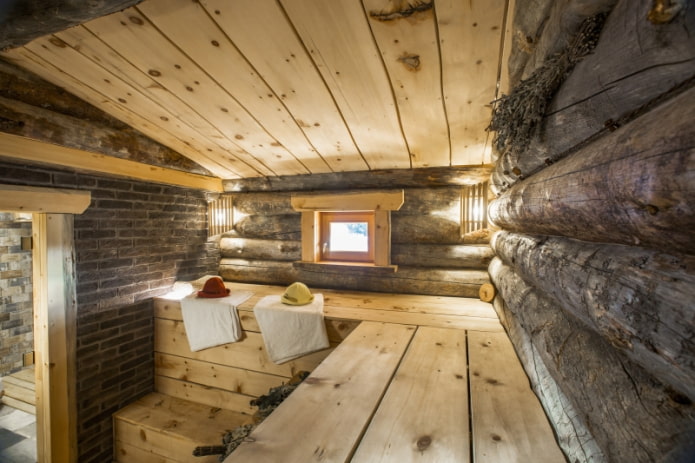
 10 practical tips for arranging a small kitchen in the country
10 practical tips for arranging a small kitchen in the country
 12 simple ideas for a small garden that will make it visually spacious
12 simple ideas for a small garden that will make it visually spacious
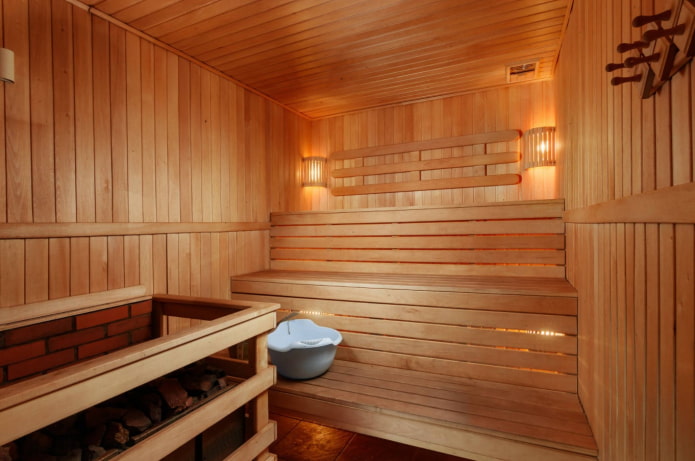
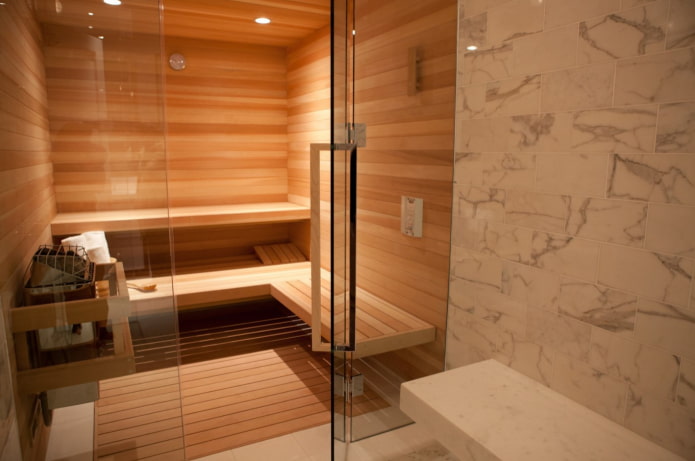
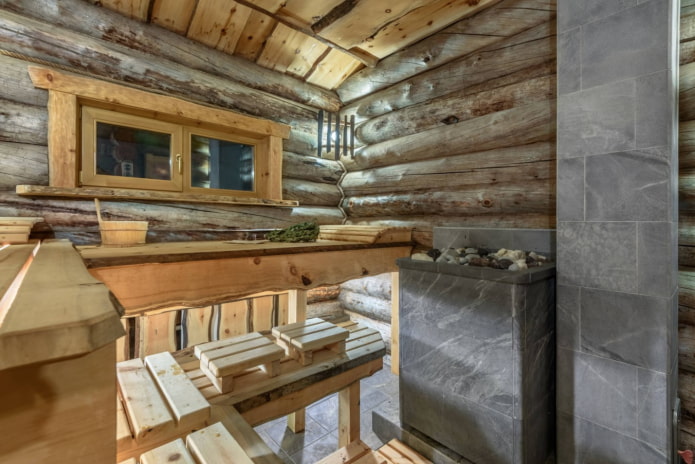
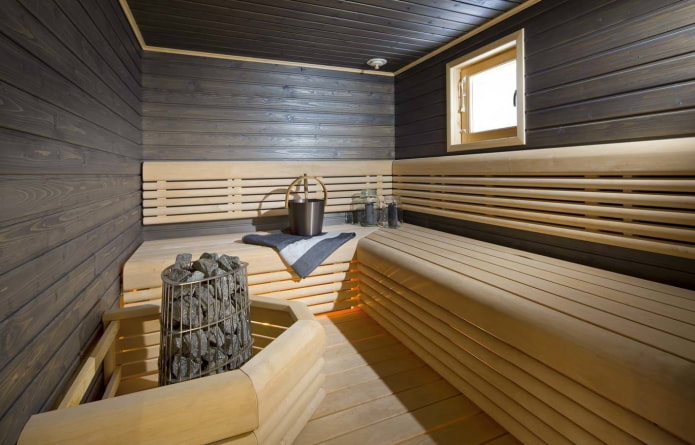
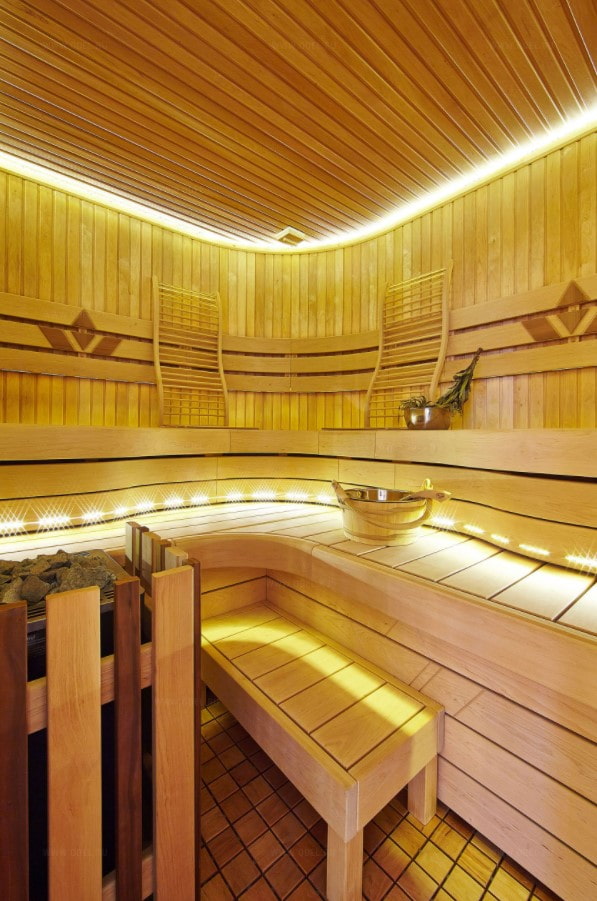
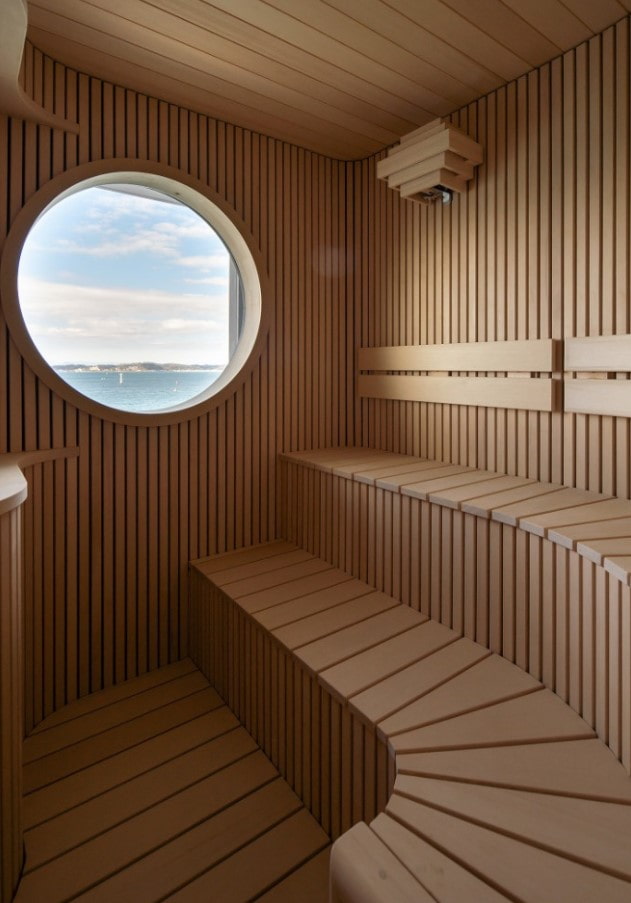
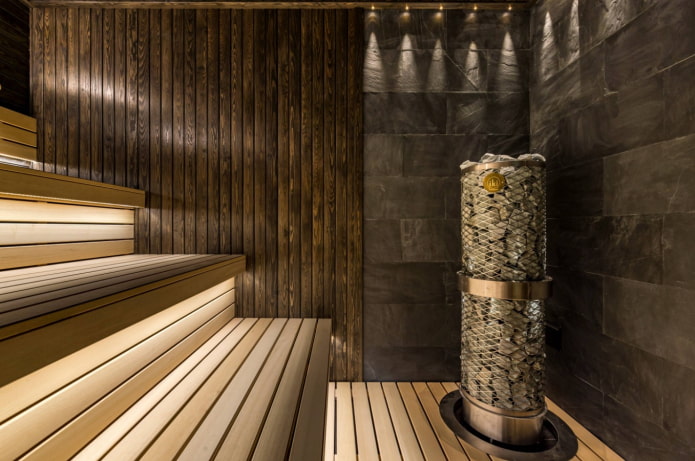
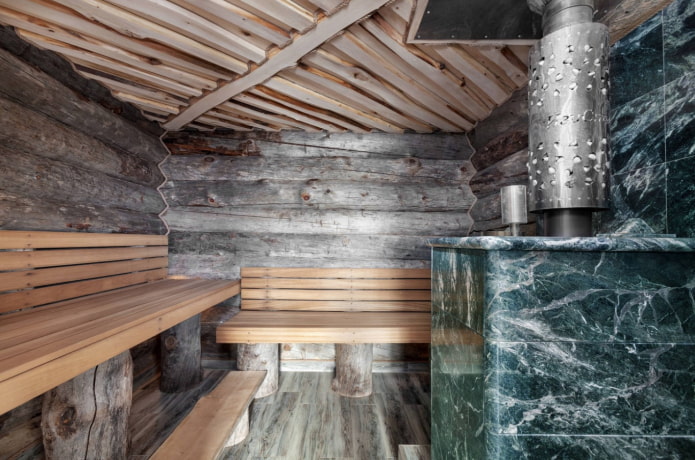
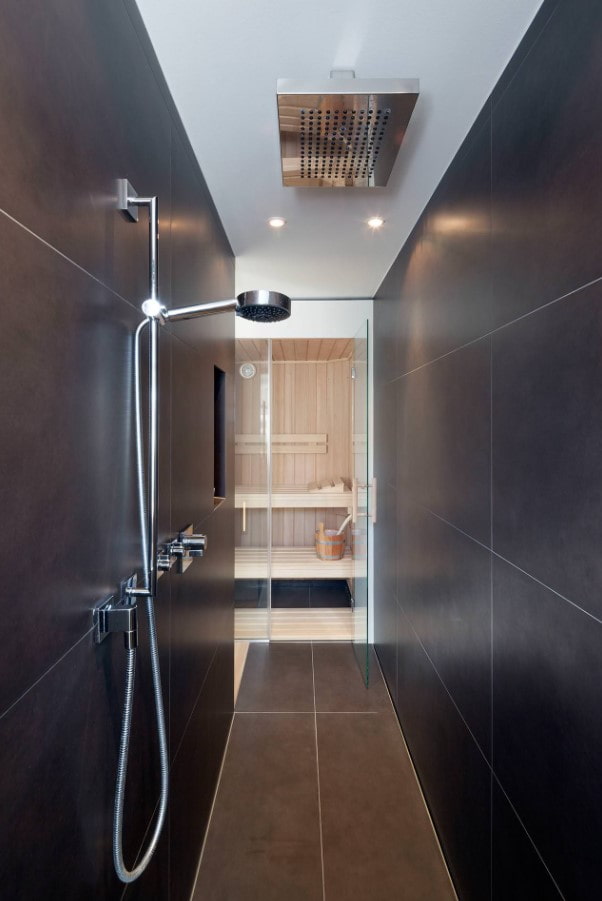
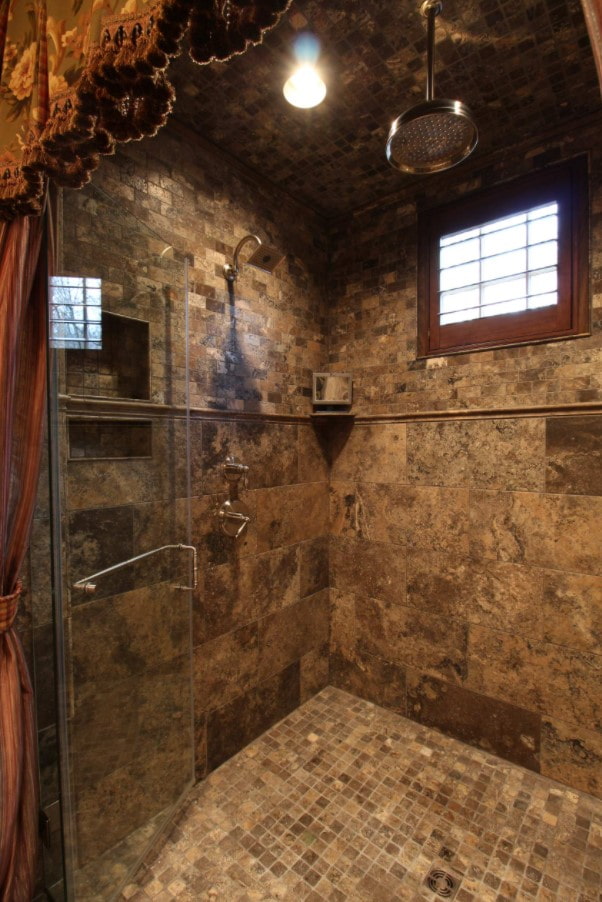
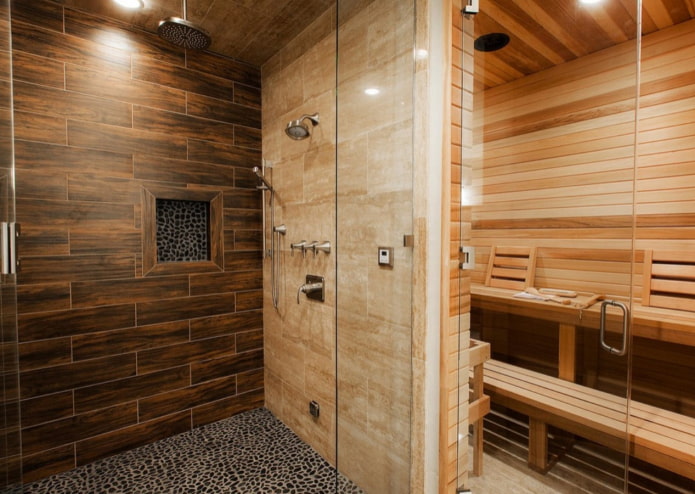
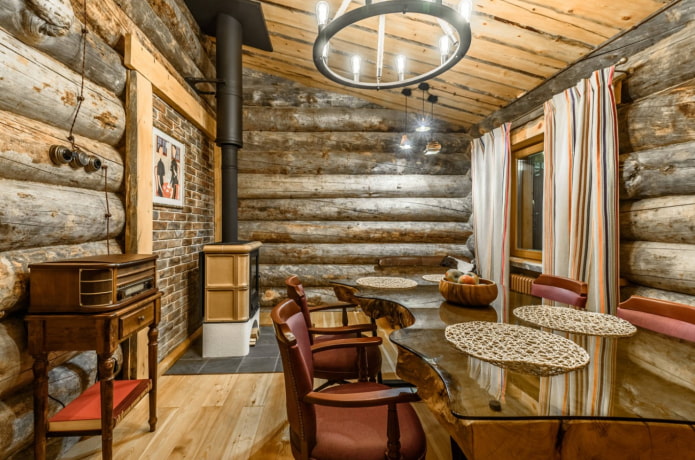
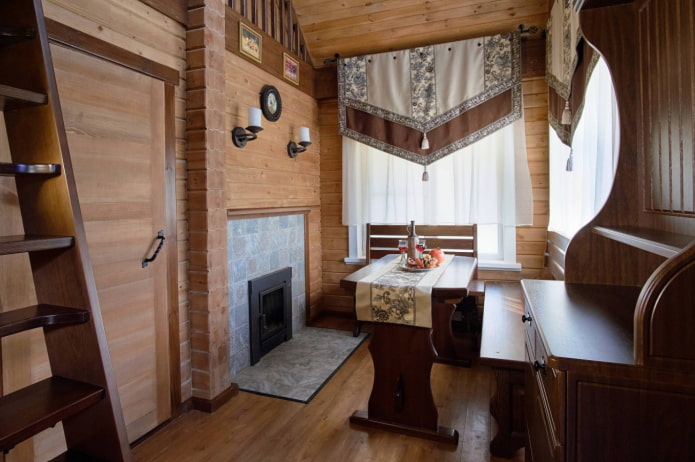
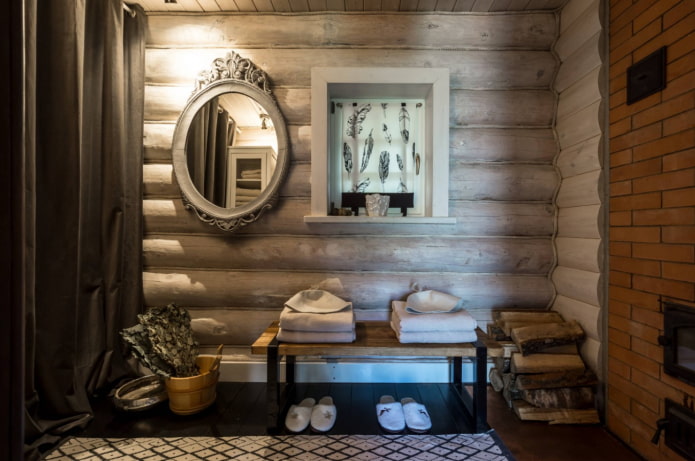
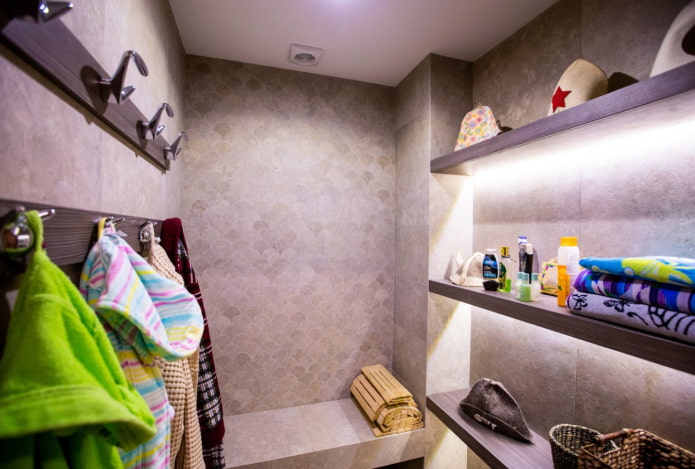
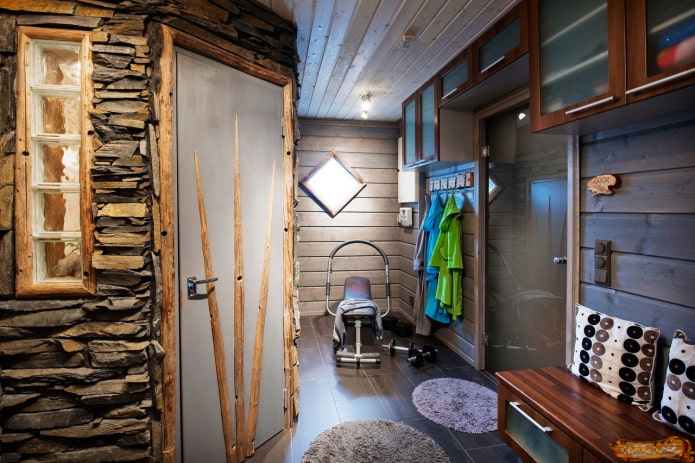
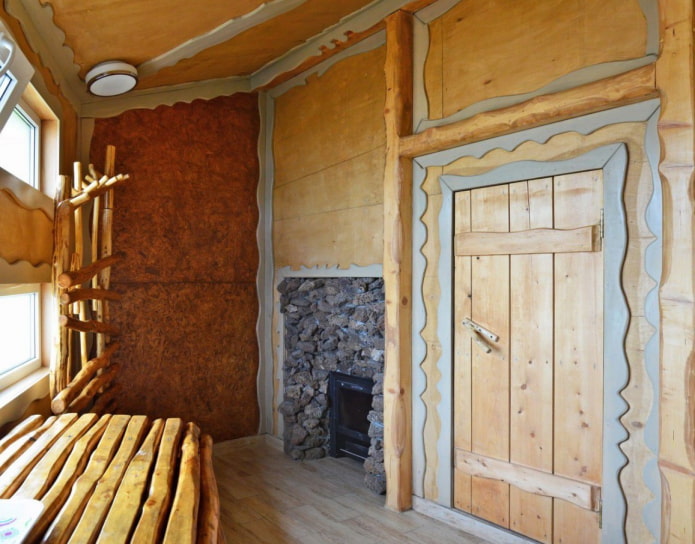
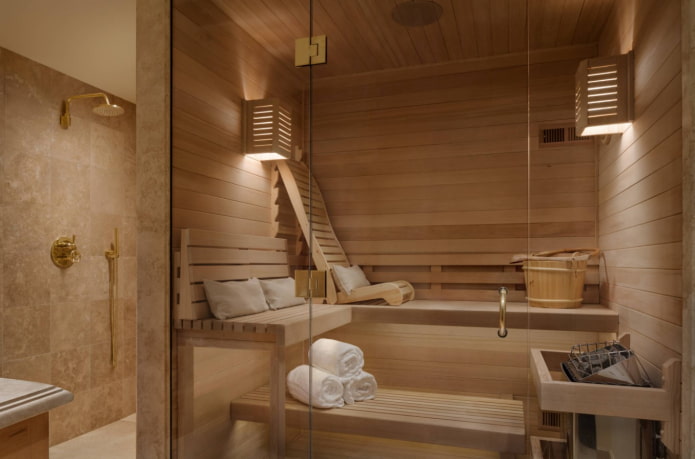

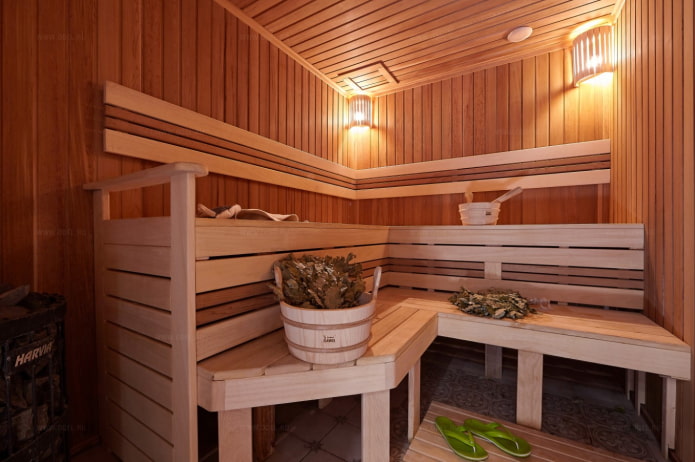
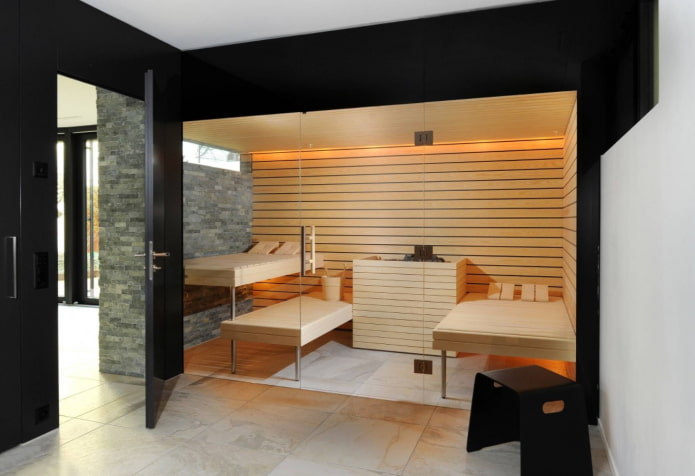
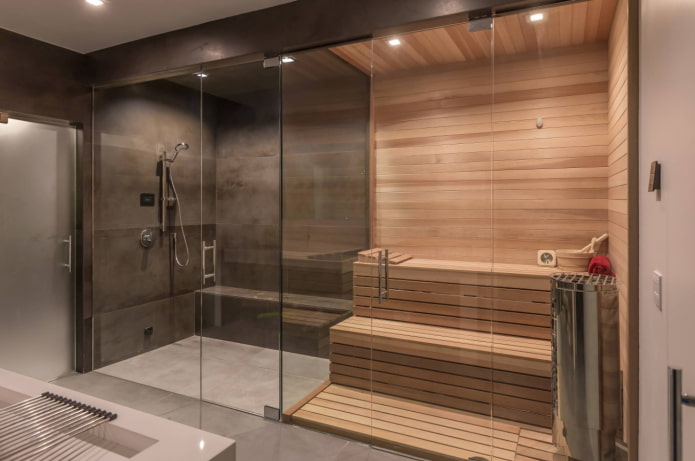

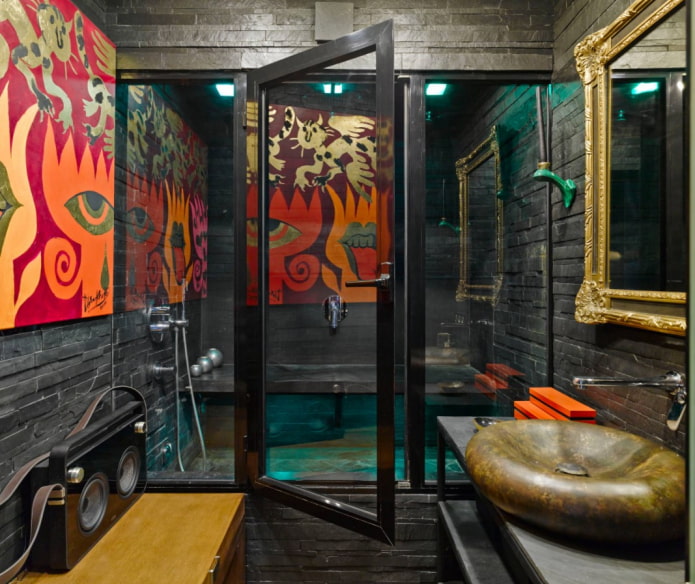
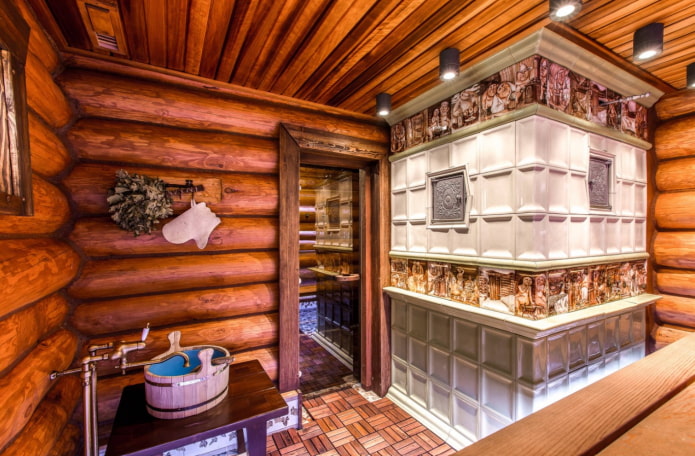
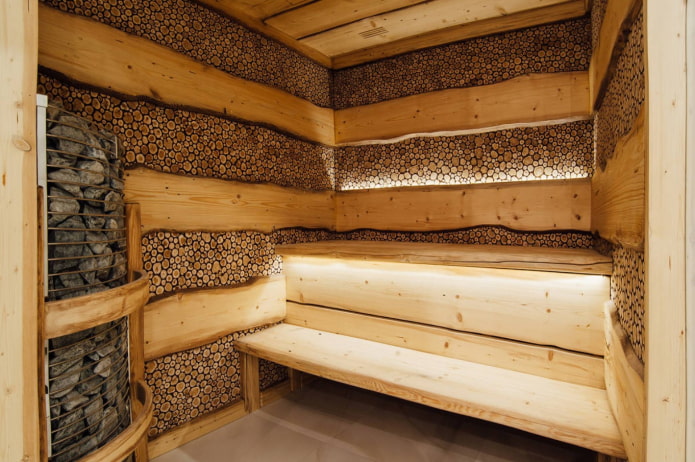
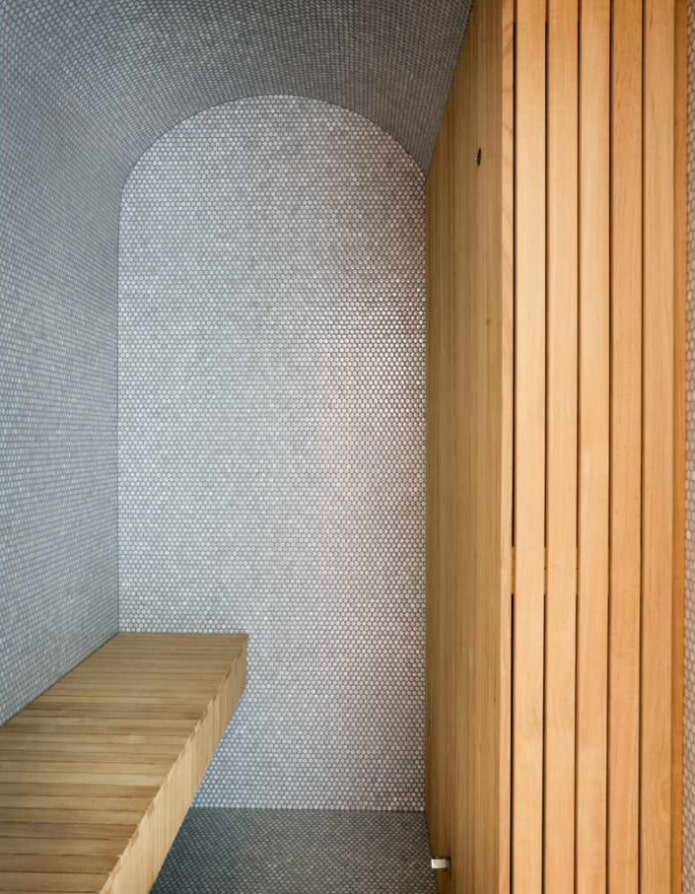

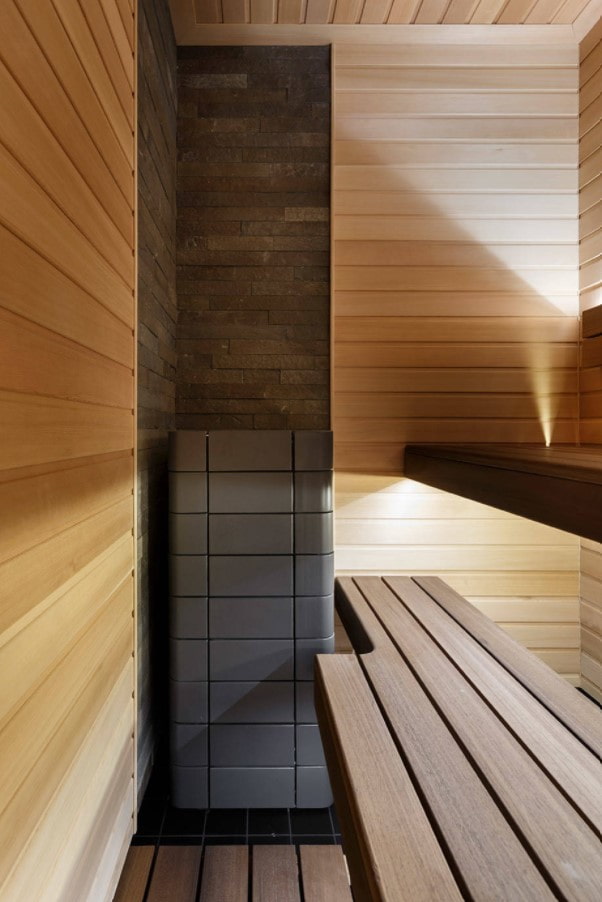
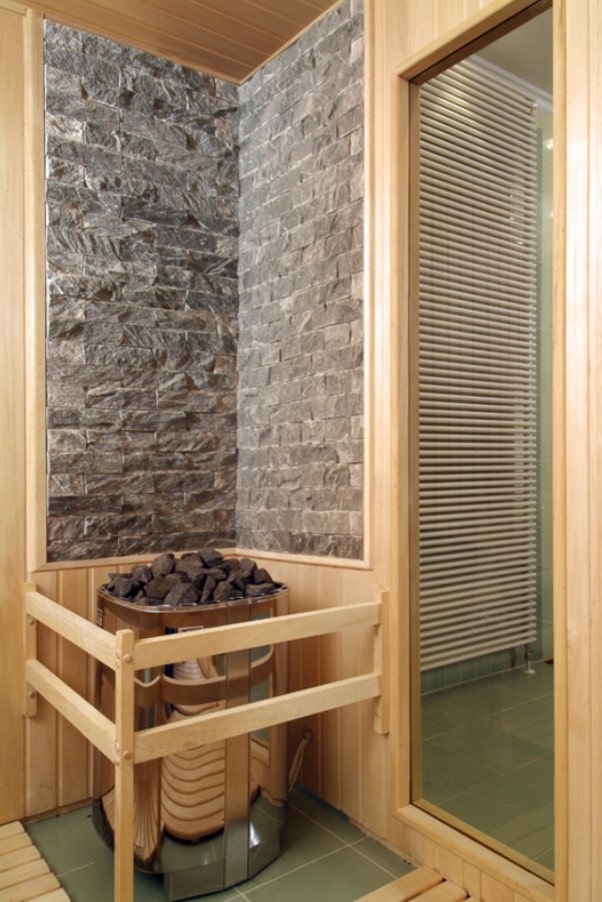
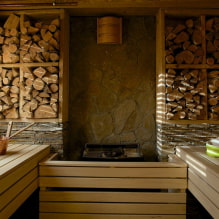
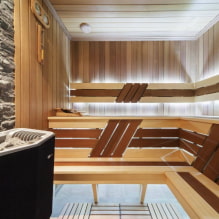
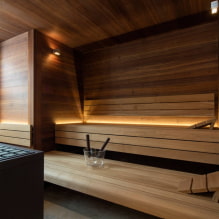
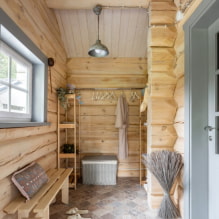
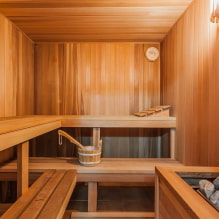
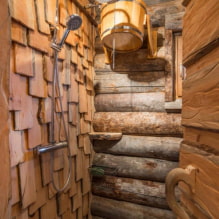

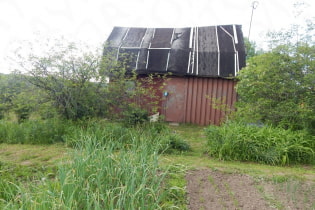 What can you save on when renovating your summer cottage?
What can you save on when renovating your summer cottage? 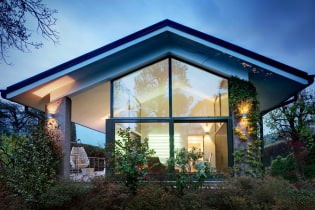 Houses with panoramic windows: 70 best inspiring photos and solutions
Houses with panoramic windows: 70 best inspiring photos and solutions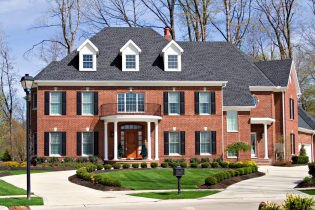 Brick facades of houses: photos, advantages and disadvantages
Brick facades of houses: photos, advantages and disadvantages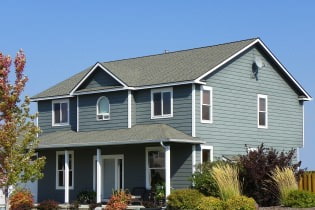 Siding house facades: features, photos
Siding house facades: features, photos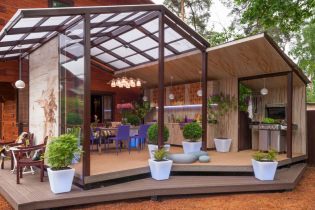 Terrace design in a private house in the Moscow region
Terrace design in a private house in the Moscow region Provence style house design in Moscow region
Provence style house design in Moscow region